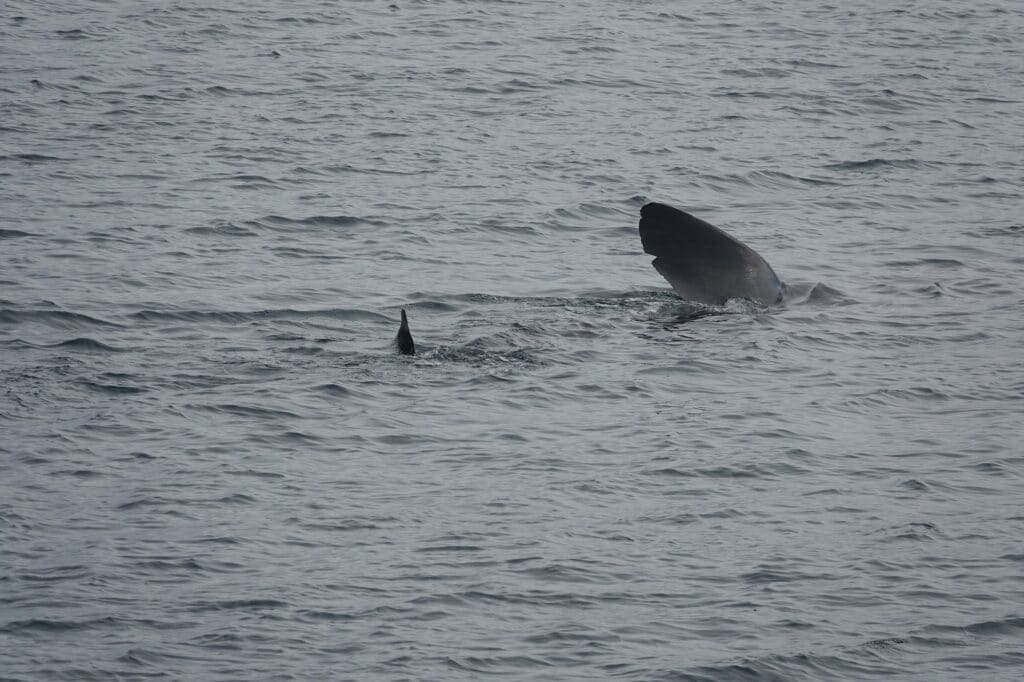Basking shark – (Cetorhinus maximus)
Basking sharks are the second-largest living shark, after the whale shark, but despite its size, it is not threatening to humans as it feeds of krill, plankton, fish eggs, and other small creatures. It is a slow-moving filter feeder, and can grow over 12m long however more commonly is a size of 8m, still a very big fish!
They are normally a grey-brown color, with mottled skin, and it is propelled by its strong, crescent-shaped tail. Despite its size, it has the smallest brain of any shark species, compared to its size.
Normally solitary, basking sharks will engage in social behavior in the summer and have been seen swimming nose to tail in circles, which is thought to be a courtship ritual.
Embryos develop inside the female, but as they are fish this is from an egg, with no placenta connecting the young to the mother. We really don’t know a lot about these creatures but gestation is thought to take over a year, possibly up to 3 years, so it is unsurprising that mating frequency could be as little as every 2 to 4 years. When the young is born they measure between 1.5 to 2m and are self-sufficient.
Basking sharks are thought to live up to about 50years, but again, information is lacking about this wonderful creature. They are thought to be mature between 6 and 13years old, by which time they are about 5m in length.


